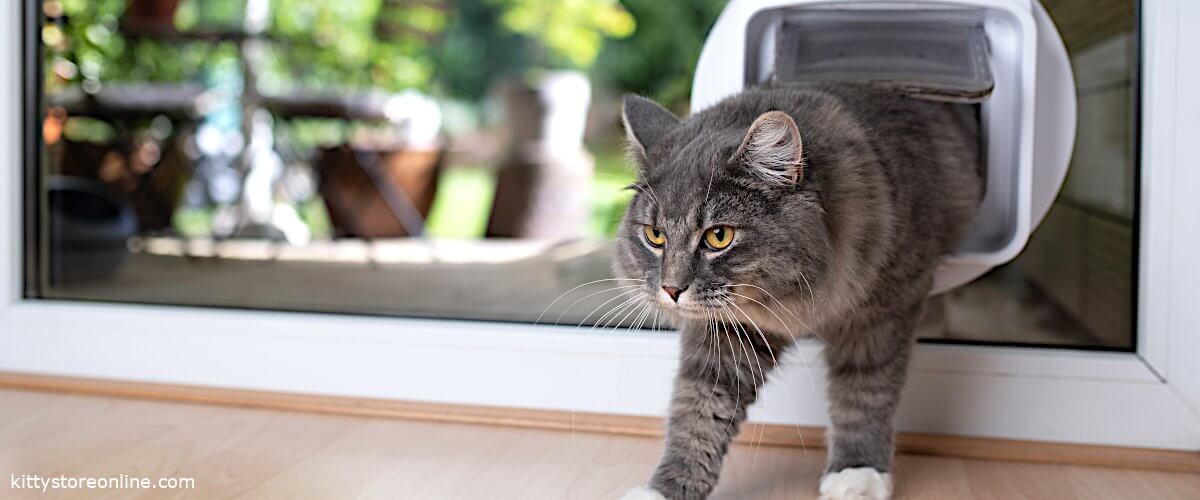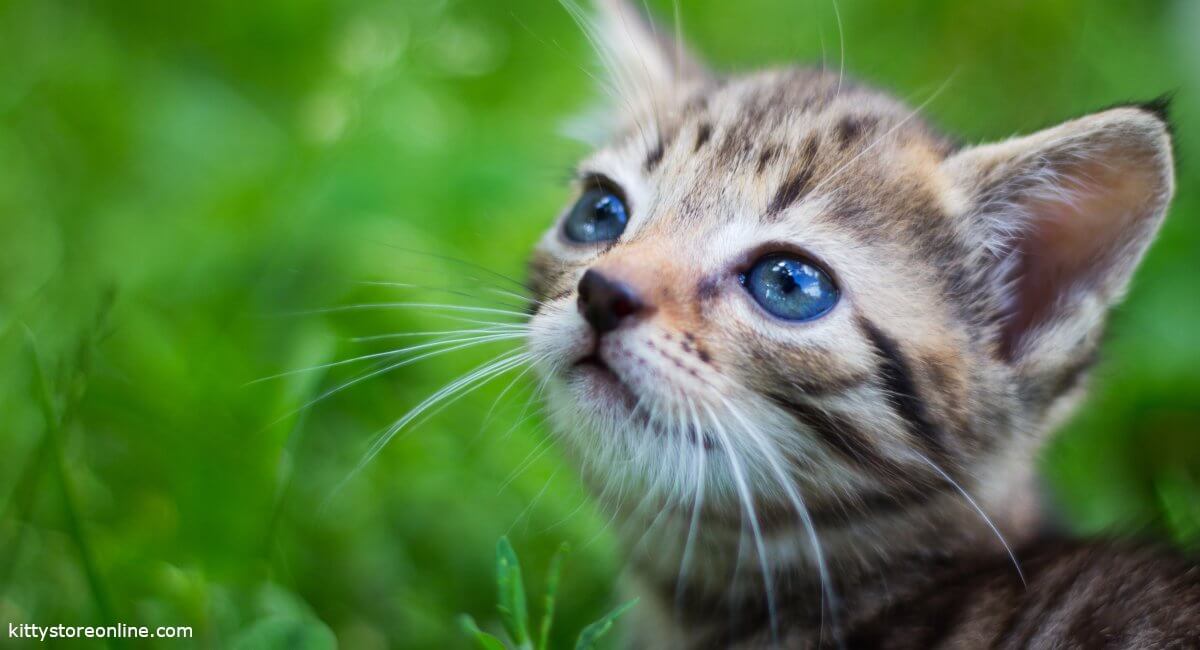Free-roaming cats are happier than indoor-only cats. Exercising in the fresh air and doing whatever comes to their minds garnish a full cat life. However, outdoor cats are also exposed to dangers and their life expectancy is slightly shorter than apartment cats at 15 years. Cats with disabilities, allergies and chronically ill cats should be kept indoors. Among the pedigree cats, Bengals and Main Coons are suitable as outdoor cats. If a free-roamer is to become an apartment cat because of a move, this is pure stress for the cat.
Requirements for outdoor cats
A house with a garden or an apartment on the first floor are ideal for free-rangers. Of advantage is a cat flap, so that the cat can independently out and in. In rented apartments should be clarified beforehand with the landlord and the neighborhood because of the domestic peace, whether objections exist against a free-roaming cat. Also, a busy environment is not necessarily suitable for free roamers. There is a high risk that the outdoor cat will be hit by a car or fatally injured by a vehicle. Another danger that should not be underestimated are parasites that are transmitted through contact with other conspecifics or the environment. Against fleas, ticks, mites and worms must be applied several times a year worming (four times a year) and preventive antiparasitic agents. Against diseases such as cat cold, feline epidemic and rabies, a free-ranger should be absolutely vaccinated, because the transmission occurs in contact with other cats. Free roamers should also be spayed or neutered to prevent unchecked reproduction of cats. In some municipalities there is already a castration obligation. Neutering has other advantages as well: Cats no longer go into heat, aggression decreases, life expectancy increases, and strays are more likely to stay in the immediate area after neutering. Every outdoor cat should be chipped in case it ever gets lost.

The first free walk
If the cat has become accustomed to the apartment and the family, the first free walk may take place in the cat-safe garden. It is advantageous if the cat can be put on a harness with a leash for this. If the cat is frightened by an unknown noise, it cannot run away uncontrollably. Nevertheless, the leash should allow enough space to explore the garden independently. If the cat does not allow itself to be put on a harness, you must trust your cat. It may stay at the house or immediately visit the neighbor’s garden. If there are some bushes in the vicinity, the cat will want to hide there. So you can build more hiding places at the house with garden furniture or an outdoor cat cave before the first free walk. From there, the cat will like to look at the surroundings first. Arrange the first free walk so that the cat is hungry. It can then be lured home with food. Also, if it starts to rain lightly, the cat will want to return to the dry home. Do not plan the first outdoor walk for the evening, when it is about to get dark. You will be able to see the cat better in daylight. Offer the cat its companionship and go ahead to hiding places and excursions. However, do not lead the cat further away from the front door than it wants to go itself. Using the cat flap also takes a lot of getting used to. Lure the cat with food through it by locking the cat flap at the beginning. If the cat has become accustomed to it, let the cat flap swing when going out and coming in.
Once the cat has explored the garden, you should allow its own forays. You can accompany the cat on its first forays. The cat will then be worse at listening to its name and is more likely to feel disturbed by it. Then pretend that you are busy with something else. The cat may be interested in what you are doing and come to you. Then reward the cat with a treat. If she goes home with you again, reward the cat with a tasty meal, preferably her favorite food. This way she learns to associate coming home with tasty food. The cat may stay out longer on the first few forays. After two or three days of absence, however, you should start looking. Perhaps the cat was accidentally locked up somewhere.
What is a cat-proof garden?
If the cat is only to stay in the garden, you will need an escape-proof fence about 1.8 meters high. Clarify beforehand whether you need a building permit for such a high fence. Will the fence interfere with the neighbor’s view and is the high fence also the best solution for me? A completely enclosed property with a fence with over-climbing protection can quickly cost several thousand dollars. Alternatively, you can fence only a part of the garden. Such enclosures are available for purchase in different sizes. For trees on the property, you should attach a cat repellent belt that prevents the cat from climbing up the tree. Make sure that the metal ends of the cat repellent belt have protective caps. The gutter downspout or the roof of the gazebo could also help the cat escape. Secure the garden pond and rain barrel. Poisonous garden flowers for cats include:
- Azalea
- Begonias
- Ivy
- Angel Trumpets
- Golden Rain
- Tulips
- Oleanders
- Lupines
Even if the cat is a limited free-roamer, the area for free-roaming should be enriched with employment opportunities. Cat toys, a scratching post outdoor as a climbing place and a shallow watering hole can keep the cat busy longer. If the cat spends a lot of time outdoors, then you may place the food bowl and the drinking bowl outside. A resting place in the shade outdoors can be a weatherproof cat cave.
Outdoors in winter
Cream the cat paws regularly with balm, so that the skin does not crack due to the cold. In winter, a free-roaming cat’s food may be more energetic than usual.
Advantages and disadvantages free-range
Free-roaming cats live healthier lives and are unlikely to be overweight because of the exercise they get. The furniture in the apartment remains undamaged because the cat can live out its urge to move outside. As a cat owner you have less work, because the cat is on the move a lot. The disadvantage is the risk of accidents and parasite infestation. You cannot control where the cat is or what it eats.
When free-rangers don’t come home
If cats do not receive enough attention at home, they may seek affection and social interaction elsewhere. This includes play, approach and physical contact, which are so important to cats. Even if outdoor cats come home tired, they still register the attention and affection, even if they can’t bring themselves to play. Cats with a strong bond to their home drag themselves back home, even the most severely injured, knowing that they will get help there. Therefore, reliable access that is always open to the cat is also important. If access is repeatedly denied, cats may wander off. Outdoor cats should have the same items available in the home as indoor cats. These include the litter box, food, water, a scratching post, retreats, and sleeping and lounging areas. Network with neighbors so cat haters can’t roam undisturbed. It can even organize a time-delayed outlet, if it comes between two free-rangers in the neighborhood again and again to violent fights
An absolute security does not exist for free-rangers. Thus, trusting cats like to get into other people’s cars and “animal-loving” contemporaries make the cat over food gifts away. Therefore, invest in a GPS tracker in the cat collar with safety lock against hanging, so that you can track via smartphone or PC, where your free roamer is.








